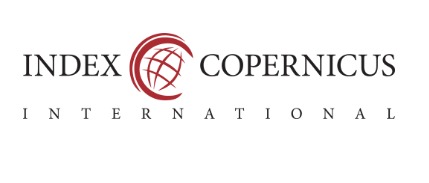The decision making analysis of increasing storage capacity of sutami reservoir with Analytical Hierarchy Process (AHP) approach
Abstract
Aim: This research aims to use the Analytical Hierarchy Process (AHP) technique, a form of multi-criteria decision-making, to rank the relative merits of potential courses of action. Through pairwise comparisons based on importance levels, AHP unites different individuals’ qualitative, subjective evaluations into a collective evaluation of decision-making.
Method: In this study, we will draw from existing literature on water resource management and planning to establish our criteria and sub-criteria. Experts in a dam, reservoir, and water resource management use FGD to finalize criteria/sub-criteria because of a knowledge gap between the two sets of studies. After collecting data from the FGDs, the criteria and sub-criteria are used in an AHP to rank a set of potential solutions.
Findings: The following is the outcome of applying weights to the pairwise comparisons we conducted using the criteria of social, environmental, technical, and economic aspects: With 36.2% of the vote, the option of raising the dam body by 5 meters is deemed most important. In terms of alternatives, a 0.5-meter-higher spillway comes in second with a weight of 25.7%, while dredging sediments to the same depth as sediment inflow comes in third with a weight of 20.5%, and maintaining the current configuration receives the least amount of weight at 17.7%.
Implications/Novel Contribution: All stakeholders must back and contribute to the development of research aimed at extending the useful life of existing reservoirs. It is common knowledge that all reservoirs have a finite amount of time before they must be shut down. Old, inefficient reservoirs are expensive to keep up and close. However, a new dam will not come cheap, and finding a suitable site is uncertain.
References
Azarnivand, A., Hashemi-Madani, F. S., & Banihabib, M. E. (2015). Extended fuzzy analytic hierarchy process approach in water and environmental management (case study: Lake urmia basin, iran). Environmental Earth Sciences, 73(1), 13-26. doi:https://doi.org/10.1007/s12665-014-3391-6
Baker, D., Bridges, D., Hunter, R., Johnson, G., Krupa, J., Murphy, J., & Sorenson, K. (2002). Guidebook to decision-making methods (Tech. Rep.). Department of Energy, California, CA.
Batuca, D. G., & Jordaan Jr, J. (2000). Silting and desilting of reservoirs. Cambrige, UK: CRC Press.
Bening, R. B. (1981). Internal colonial boundary problems of the gold coast, 1874-1906. Journal of African Studies, 8(1), 2-10. doi:https://doi.org/10.2307/218498
Ciptomulyono, U. (2010). Learn to pronounce the multi-criteria decision making paradigm in the perspective of the development of environmentally sound projects and industries. Pidato pengkukuhan Guru Besar Dalam Bidag Ilmu Pengambilan Keputusan Multikriteria, 5(7).
Erdogan, S. A., Šaparauskas, J., & Turskis, Z. (2017). Decision making in construction management: AHP and expert choice approach. Procedia Engineering, 172(6), 270-276. doi:https://doi.org/10.1016/j.proeng.2017.02.111
Harris, R. (2012). Introduction to decision making, part 1. New York, NY: Willey and John Sons.
Hidayat, F., Juwono, P. T., Suharyanto, A., Pujiraharjo, A., Legono, D., Sisinggih, D., & Neil, D. (2018). Sediment management of reservoirs in volcanic area: Case of wlingi and lodoyo reservoirs in Indonesia. Retrieved from https://urlzs.com/1C9F7 (Accessed on 15 July, 2018)
International Commission on Large Dams. (2012). Sedimentation and sustainable use of reservoirs and river systems. Retrieved from https://urlzs.com/s1FRm (Accessed on 14 July, 2016)
Japan Internation Cooperation Agency. (2017). The project for assessing and integrating climate change impacts into the water resources management plans for Brantas and Musi river basins. Retrieved from Https://fvBR9 (Accessed on 15 July, 2018)
Lahor, S. B. (2011). Modular columbarium. Retrieved from https://urlzs.com/85BL6 (Accessed on 14 July, 2013)
Maletic, D., Maleti ˇ c, M., Lovren ˇ ciˇ c, V., Al-Najjar, B., & Gomiš ´ cek, B. (2014). An application of Analytic ˇHierarchy Process (AHP) and sensitivity analysis for maintenance policy selection. Organizacija, 47(3),177-188. doi:https://doi.org/10.2478/orga-2014-0016
Manager, D. (2017). The aesthetic dimension of decision making: A case study of a german software company. International Journal of Humanities, Arts and Social Sciences, 3(5), 223-230. doi:https://doi.org/10.20469/ijhss.3.20005-5
Marczak, M., & Sewell, M. (2007). Sing focus groups for evaluation. Retrieved from https://urlzs.com/n3jxc (Accessed on 8 August, 2018)
Masadeh, M. A. (2012). Focus group: Reviews and practices. The Journal of Applied Science and Technology, 2(10), 45-60.
Masuo, D., & Cheang, M. (2017). Disconnect between parents values for saving and actual savings behavior: Impact on childrens education and financial decision-making. Journal of Advances in Humanities and Social Sciences, 3(6), 332-339. doi:https://doi.org/10.20474/jahss-3.6.5
Prince, M., & Davies, M. (2001). Moderator teams: An extension to focus group methodology. Qualitative Market Research: An International Journal, 4(4), 207-216. doi:https://doi.org/10.1108/eum0000000005902
Pwint, O. M. N. C. H. (2016). The status and the problem of western vocal music teaching in Myanmar. Journalof Advanced Research in Social Sciences and Humanities, 1(1), 9-17. doi:https://doi.org/10.26500/jarssh-01-2016-0102
Saaty, T. (1980). The analytic hierachy process: Planning, priority, setting, resource allocation. New York, NY: Mc Graw - -Hill.
Satty, T., & Kearns, K. (1985). Analytical planning: The organization of systems. Oxford, UK: Pergamon.
Schleiss, A. J., Franca, M. J., Juez, C., & Giovanni, D. (2016). Reservoir sedimentation. Journal of Hydraulic Research, 54(6), 595-614. doi:https://doi.org/10.1080/00221686.2016.1225320
Srdjevic, B., & Medeiros, Y. D. P. (2008). Fuzzy ahp assessment of water management plans. Water Resources Management, 22(7), 877-894. doi:https://doi.org/10.1007/s11269-007-9197-5
Xi, X., & Poh, K. L. (2015). A novel integrated decision support tool for sustainable water resources management in Singapore: Synergies between system dynamics and analytic hierarchy process. Water Resources Management, 29(4), 1329-1350. doi:https://doi.org/10.1007/s11269-014-0876-8

This work is licensed under a Creative Commons Attribution-NonCommercial 4.0 International License.












.png)










